Through this piece we’re going to be taking a look at the 5 of the most toxic berries found in the UK (or at least from our experience foraging over the years).
In summer and autumn time the hedgerows and woods of the UK really come alive with colour, and berries of almost every conceivable colour appear, but how do you know which ones are good to eat and which to avoid?
As a child we’re told that red is a natures warning sign, but what about strawberries or raspberries? These are bright red or pink, fully edible and taste delightful. Unfortunately, there are no general rules in foraging and we always have to look a little deeper into the edibility of each of the items we find.
Most of us are quite familiar with blackberries and raspberries which are delicious, but here are some berries that you would definitely want to avoid.
Let’s take a closer look at 5 of the most toxic berries found in the UK
Yew (Taxus baccata)
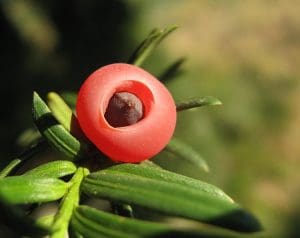
A large evergreen tree, most often found in parks, churches and graveyards. Virtually all parts are deadly toxic. Just a small quantity of the leaves or seeds would be enough to kill a human. The only edible part is the flesh around the seeds.
Click here for full ID guide on yew
What can Yew be Confused with?
It would be hard to confuse the berries with anything else, they do look a little like Redcurrants but Redcurrant grow on a small shrub rather than a tree, most incidents with Yew are when their needles are confused with other conifers.
Black bryony (Tamus communis)
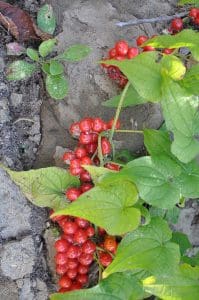
A fairly common, climbing plant. All parts are toxic, particularly the berries and the roots. Even touching the leaves can cause contact dermatitis.
Click here for full black bryony ID guide
What Can Black Bryony be Confused with?
It could be confused with the Guelder rose but Guelder berries grow on umbels and Bryony berries grow on racemes.
Lords and Ladies (Arum maculatum)
All parts of the plant contain oxalate crystals, but they are more concentrated in the berries. The plant tastes foul and contact causes an almost immediate burning sensation so you’re unlikely to eat enough for it to kill you thankfully. It does cause skin irritation and swelling and in theory it could cause your airways to become inflamed making it difficult to breath. There are no recently recorded fatalities from Lords and Ladies.
Click here for full lords and ladies ID guide
What Can Lords and Ladies be Confused with?
Nothing really looks similar but the berries do stand out and look attractive to children.
Deadly Nightshade (Atropa belladonna)
As the name suggests it can be deadly poisonous, all parts of the plant contain tropane alkaloids which can cause delirium, hallucinations and death.
Click here for full Deadly Nightshade ID guide
What Can Deadly Nightshade be Confused with?
They have apparently been confused with Bilberries (Vaccinium myrtillus) in the past. But Bilberries normally appear earlier in the year, have a ‘bloom’ on the surface and the plants themselves look very different.
Spindle (Euonymous europaeus)
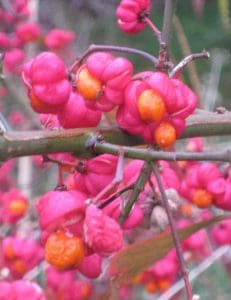
An indicator of ancient woodlands it’s also planted as an ornamental in parks and gardens. The berries are potentially deadly poisonous but it’s quite easy to identify as the berries are quite unique.
Click here for the full spindle ID guide
What can Spindle be Confused with?
The fruits are quite unique so it would be hard to confuse them with anything else. Before it fruits the plant does look similar to Dogwood (Cornus sanguinea) this develops blackish fruits and should also be avoided.
Conclusion
We’ve highlighted 5 of the most deadly toxic berries found when out foraging for edible delicacies in the UK (from our experience) we’re doing this not to scare you but to empower you to be confident that you’re not picking anything deadly toxic when you’re next out hunting for lovely redcurrants and elderberries.
References:
Top 10 facts about Lords & Ladies
More from Alnwick Poison garden
More info from the garden network
Leave a Reply
You must be logged in to post a comment.



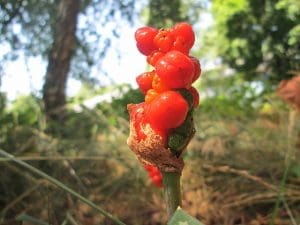
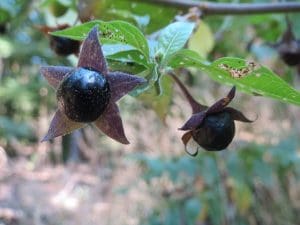



1 reply on “5 of the most toxic berries found in the UK”